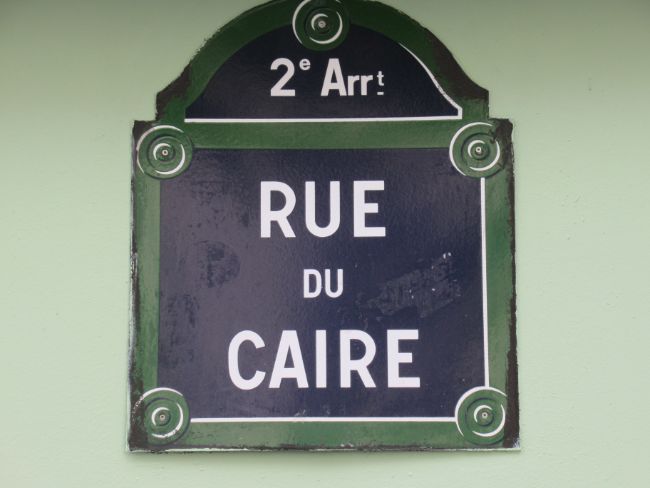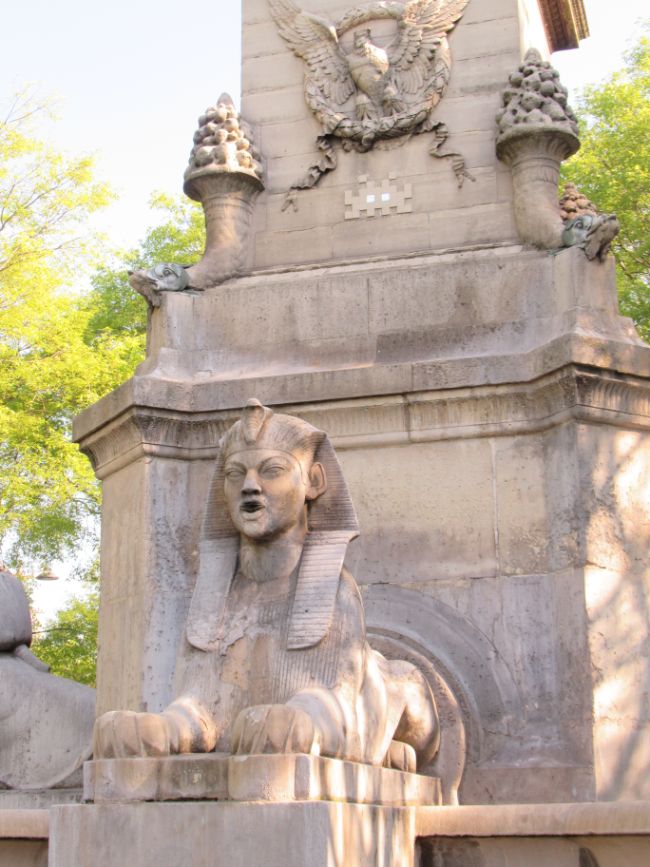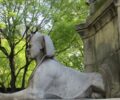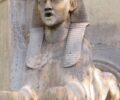How Egyptian Culture Came to Paris


- SUBSCRIBE
- ALREADY SUBSCRIBED?
BECOME A BONJOUR PARIS MEMBER
Gain full access to our collection of over 5,000 articles and bring the City of Light into your life. Just 60 USD per year.
Find out why you should become a member here.
Sign in
Fill in your credentials below.
“Ramses the Great and the Gold of the Pharaohs” is the enticing title of the exhibition currently running at La Villette in northern Paris. Some of the treasures on display have never left Egypt before, so it’s no wonder that visitors are flocking to admire them and to enjoy virtual visits to ancient Egyptian sites such as the temple of Abu Simbel and the tomb of Nefertiti.
This popular exhibition, like the record-breaking one on Tutankhamun in 2019, is a reminder of the close links between Paris and Egypt. As so often, this can be traced back to Napoleon because Egyptomania hit Paris in the aftermath of his Egyptian campaign, even though that ended in failure in 1801. Many of the scholars and scientists he took with him wrote up their findings when they returned to France and a fondness for all things Egyptian took off, especially in Paris.
It was more than a passing interest. In 1827 Jean-François Champollion founded the Egyptian Section at the Louvre, having made his name by successfully deciphering the hieroglyphics on the Rosetta Stone which Napoleon’s soldiers had found in Egypt nearly three decades earlier. In 1831 Champollion was appointed the first Chair of Egyptology at the Collège de France, another sign that interest in and study of all things Egyptian was very much in vogue in Paris. The French admiration for Egypt was reciprocated two years later when the Obelisk of Luxor, a treasure more than 3000 years old, arrived in Paris as a gift from the Sultan of Egypt.
As a result, 19th-century Paris went a little Egypt-crazy. The Rue du Caire in the 2nd arrondissement was named after Napoleon’s march into Cairo in 1798 and nearby roads were given similarly themed names such as the Rue du Nil and the Rue d’Alexandrie. They can all still be seen today, as can the Passage du Caire, the oldest, longest and narrowest shopping arcade in Paris. It was extravagantly decorated with Egyptian figures, columns and hieroglyphics. Today, you can still see an image of the goddess Hathor over the main entrance at 2, Rue du Caire, and mosaics on the upper facades inside. In addition, Egyptian-style monuments were built all over the city, including obelisks, fountains and – it is said – over a hundred sphinxes!
The Louvre is a good place to start your search for Egypt in today’s Paris, not least because you will pass the Pyramid on the way in. Commissioned by Président Mitterrand to refresh the Louvre’s courtyard, the artist Leoh Ming Pei designed an ultra-modern version of the largest and most famous of all the pyramids, the Great Pyramid at Giza. Inside, the Department of Egyptian Antiquities is considerably larger than when it opened in the 1820s, now containing over 6,000 works spanning nearly 5000 years. Here, you can wander the vast collection of sculptures of Egyptian gods, sarcophagi and mummies, funeral vases and exquisite jewelry and search out the Great Sphinx of Tanis.
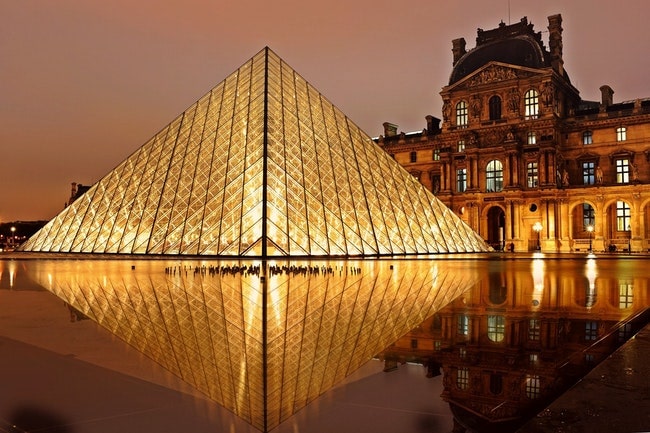
Louvre Pyramid in Paris. © Pixabay at Pexels
The most obvious outdoor place to find a hint of Egypt is La Place de la Concorde, where the Obelisk stands proudly, right in the middle of the square. This stunning red granite column, 23 meters tall and decorated with gold leaf and hieroglyphics, was made during the reign of Ramses II some 3000 years ago. It arrived in Paris in 1833, a gift from the Sultan and Viceroy of Egypt, Mehemet Ali, bestowed as a gesture of friendship and in gratitude that a Frenchman – Champollion – had solved the mystery of how to read hieroglyphics.

Place de la Concorde and the obelisk. Photo: David Stanley/ Flickr
And then there are the fountains. If you come out of the vast Châtelet metro station at the exit for Place du Châtelet, you will immediately see the enormous Fontaine du Châtelet, commissioned by Napoleon himself in about 1806 to provide free safe-to-drink water to Parisians, while also commemorating his Egyptian campaign. It may seem a strange decision, given that his attempt to conquer Egypt had ended in ignominy, but perhaps he was captivated by the exotic new culture he had encountered. The fountain’s tall column, decorated with carved palm leaves, is surrounded by four large and imposing sphinxes, all spouting jets of water.
The Fontaine du Fellah is in Rue de Sèvres, next to the Vaneau metro station. It was another of Napoleon’s gifts to the city, designed by the same engineer as the Châtelet fountain, François Jean Bralle. Today, there is only a non-working replica left, but it too was at least partly Egyptian-inspired, the word fellah meaning “peasant.” In fact, the cultural references are a little mixed this time because the figure on the statue is thought to be a copy of a Roman statue brought back to Paris by Napoleon from his Italian campaign.
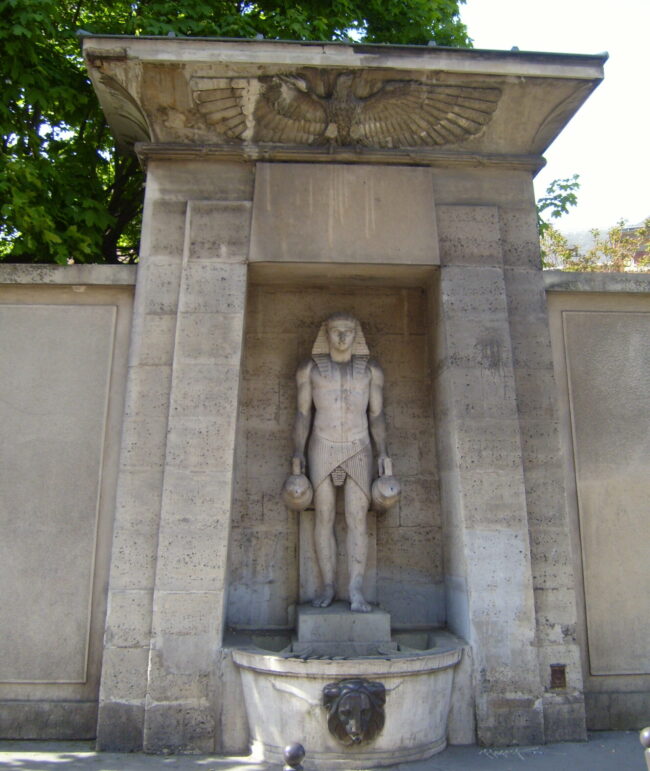
Fontaine du Fellah. Photo credit: SiefkinDR / Wikimedia commons
Of the city’s many sphinxes, the best-known include a large one atop a pedestal at the Louvre end of the Tuileries Gardens and one in the courtyard of the Musée Picasso. There is a statue representing the River Nile in the Tuileries, and on the Champs-de-Mars, you can find another Egyptian-inspired monument, this one built to commemorate the bicentenary of the French Revolution in 1989. Its shape was inspired by Egyptian mastaba tombs, in which eminent Egyptians were buried before the period of the Pyramids. It also features two bronze obelisks, covered in texts and symbols, including the wording of the Declaration of the Rights of Man and the Citizen, published in 1789.
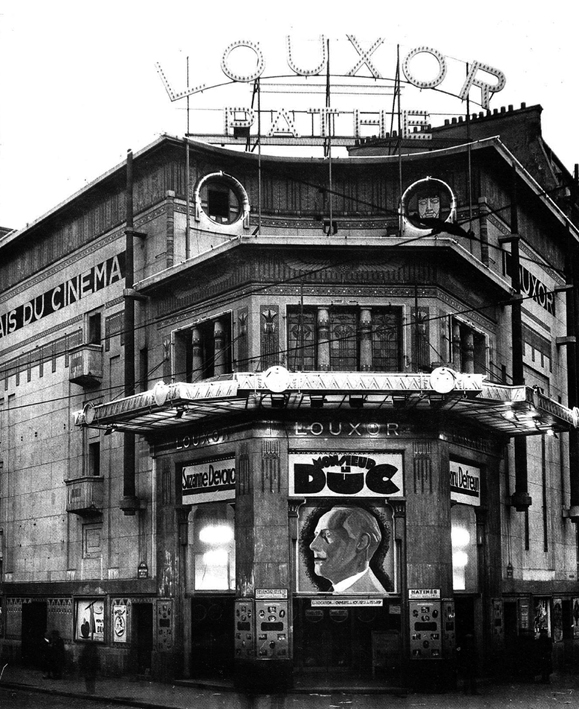
Louxor Movie Theater in 1930. Credit: Pumain / Wikimedia Commons
More unexpectedly, Egyptian culture can also be found in a cinema in the 10th arrondissement. The Louxor Cinema, built in Egyptian style in 1921, was originally independent, then bought by the Pathé chain. It had a very chequered history and was eventually closed in the 1980s, but a renovation, including restoring the mosaics decorating the original façade gave it new life in 2013. You can find it at 170, Boulevard Magenta, just next to the Barbès-Rochechouart metro station and if you watch a film in the main auditorium, you will see Egyptian styling touches inside too, such as pillars and carvings.
In the Père-Lachaise Cemetery, there are at least a dozen Egyptian-inspired mausoleums. The grave of Jean-François Champollion, known in France as the Father of Egyptology, is marked by an obelisk, standing tall among the other tombs. He was crucial in the links established between France and Egypt in the 19th century. Due to his linguistic ability – he spoke over a dozen languages – and dogged determination, he succeeded where so many had not, in decoding the hieroglyphics on the Rosetta Stone. This opened up the academic study of Egyptian culture in Paris, led by Champollion himself, and captured the popular imagination too.
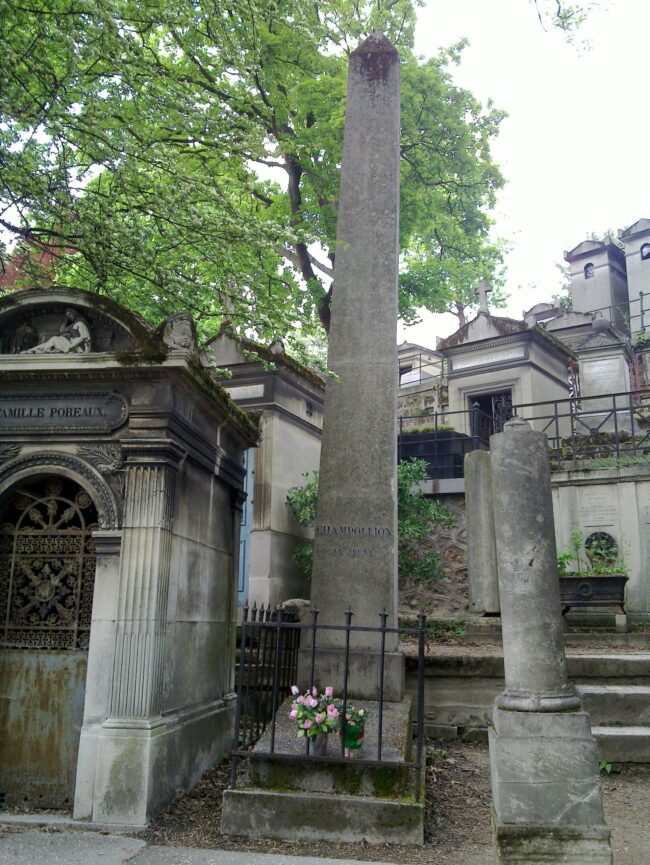
Grave of Champollion in Père Lachaise Cemetery. Photo credit: Gede / Wikimedia Commons
It’s true that the strong links between Paris and Egypt began with Napoleon. For him, discovering this new culture was a by-product of his attempt to conquer the country. But it was Champollion, much less well-known, and acting for very different reasons, who did most to embed a love of Egypt in French culture. It is largely thanks to him that the fountains and sphinxes, the Louvre’s Pyramid and the Concorde Obelisk are much-loved examples of Parisian architecture today. And he acted for a much nobler reason: out of a deep understanding and respect for Egyptian culture and a desire for his fellow Parisians to learn to love it too.
DETAILS
The exhibition “Ramses the Great and the Gold of the Pharaohs” is showing at the Grande Halle de la Villette until September 10th, 2023. Open late night on Saturdays.
The Luxour Cinema website has both French and English versions
Lead photo credit : Châtelet Fountain. Photo credit: Marian Jones
